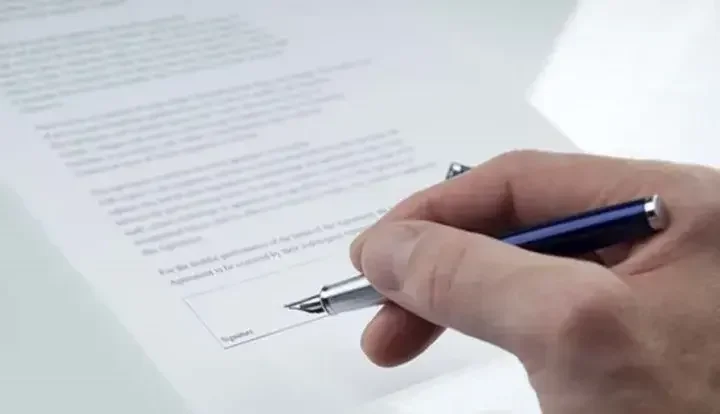When you want to convey, or transfer, real property to someone else, either by sale, gift, or by court order, you must do so by using a written document that satisfies the requirements of the law in your state. This document is either a bargain and sale deed, a warranty deed, or a quitclaim deed.

In New York State, a quitclaim deed is often the easiest and quickest way to convey the property, but it's not necessarily the best. This type of deed is often used to convey property between family members as a gift, as a result of divorce, or to place the real property into a trust. You can also use it to transfer property from a person to an LLC.
Quitclaim deeds in New York
As in other states, a New York quitclaim deed is a type of deed that conveys all of the legal rights to the property that the grantor has. The grantor is the person conveying the property, and the grantee is the person receiving the property. In a quitclaim deed, there are no guarantees or warranties to prove the grantor actually owns the property listed in the deed. For example, if the grantor gives the grantee a quitclaim deed to Grand Central Station, that doesn't mean the grantor actually owns it. A grantee of a quitclaim deed to Grand Central Station would obviously end up with nothing.
There's a certain level of trust that's needed when you receive a quitclaim deed. That's because you must trust the grantor—and trust that the grantor actually owns the property.
How to file a quitclaim deed in New York
Filing a quitclaim deed in New York is similar in each county, although the recording fees in each differ. After you get the deed notarized, you file the deed in the county clerk's office in the county where the property is located. Contact the clerk's office in that county to find out what type of payment is acceptable and which, if any, additional documents you must file. While the documents are often the same in each county, they do vary, so check your county's requirements before filing.
In counties outside of New York City, file a Real Property Transfer Report (Form RP-5217) with the county clerk along with the quitclaim deed. Quitclaim deeds filed in New York City use Real Property Transfer Report (Form RP-5217NYC) and a Combined Real Estate Transfer Tax Return, Credit Line Mortgage Certificate, and Certification of Exemption from the Payment of Estimated Personal Income Tax (Form TP-584), both of which are filed with the county clerk.
Fees to file a quitclaim deed in New York
The fees to file a New York quitclaim deed vary from county to county, but some of the fees are similar. As of 2018, the basic fee for filing a quitclaim deed of residential or farm property is $125, while the fee for all other property is $250. These fees are for the RP-5217 form. However, there are additional fees tacked on at the time of filing. These include nominal fees for other papers filed, such as fees for Form TP-584. Additionally, there is a general recording fee, and each page filed has an additional nominal cost.
As an example, the fees in Richmond County include the general recording fee, a small surcharge, a fee for additional lots and blocks, and a fee for additional mortgages. These additional fees are nominal. The most expensive fee is for the RP-5217 or RP-5217NYC form.
Tax consequences of a quitclaim deed in New York
Before filing a quitclaim deed, it's a good idea to first consider the potential tax consequences. The grantor must pay any taxes owed on the property before conveying it. Upon conveying the property, the grantor must also pay a real estate property tax. If for any reason the grantor doesn't pay these taxes, the grantee could be stuck paying them.
Other taxes may apply, such as a gift tax, which the grantor pays if the property is given to a family member as a gift. File this tax by using the United States Gift (and Generation-Skipping Transfer) Tax Return (Form 709). Some other taxes, such as capital gains taxes, could apply as well.
However, if you're using a quitclaim deed to transfer property into a trust, there usually aren't any taxes imposed. Whether there are taxes depends on what the transfer is for, such as a gift, not on the type of deed.
If you have any questions about your tax liability, make sure to speak with your financial adviser. Even though a quitclaim deed doesn't require the formalities of title searching as other types of deeds do, you still want your quitclaim deed prepared properly. You may want to consider hiring an attorney or online service provider to prepare the quitclaim deed for you.
New York quitclaim deed FAQs
Are quitclaim deeds and warranty deeds the same?
A quitclaim deed is a legal document that transfers whatever ownership rights you have in a property to someone else. However, it doesn't guarantee that you actually own the property or that there are no problems with it. This is very different from a warranty deed, which comes with a guarantee that the property works and you own it completely.
When should I use a quitclaim deed in New York?
Generally, you should use a quitclaim deed when you're transferring property between people who trust each other, not when you're buying or selling property with strangers. Some common situations include adding your spouse's name to your house deed, transferring property during a divorce, giving property to family members as a gift, or moving property into a trust.
How do I file a quitclaim deed in New York, and where do I submit it?
You file your quitclaim deed at the county clerk's office in the county where the property is located, and you must include specific tax forms with your filing. For properties outside New York City, you'll need to submit a Real Property Transfer Report (form RP-5217) and a Combined Real Estate Transfer Tax Return (form TP-584) along with your deed.
If your property is in New York City, you'll use slightly different versions of these forms (RP-5217NYC and TP-584-NYC) but file them the same way. You must file in person or by mail at the correct county clerk's office. The filing must happen after the deed is signed and notarized, and it's smart to file as soon as possible because unrecorded deeds can create legal problems later.
What are the risks of using a quitclaim deed?
The biggest risk is that you could receive a property with serious problems that you can't fix, and you have no way to get your money back from the person who gave you the deed. Since quitclaim deeds don't include any promises about the property, you might discover liens, unpaid taxes, or even that the person who gave you the deed didn't actually own the property in the first place.
Do I need a lawyer to complete a quitclaim deed in New York?
You're not legally required to hire a lawyer for a quitclaim deed, but it's often a smart idea, especially for valuable properties or complicated situations. A lawyer can make sure your deed includes all the required information, help you understand the risks you're taking, and ensure you pay the right taxes.

